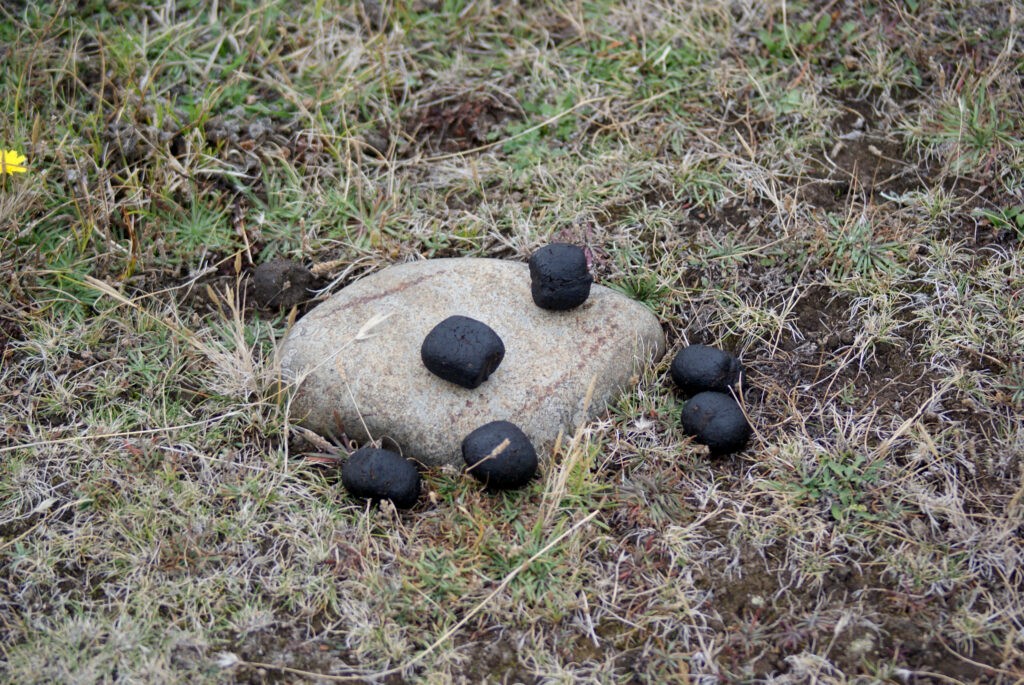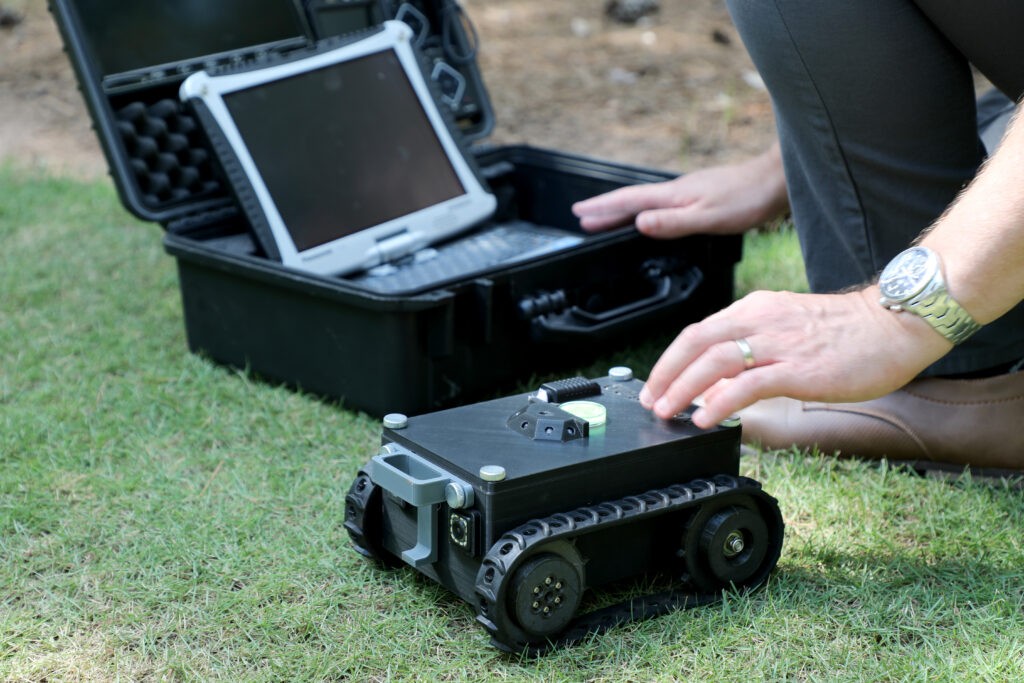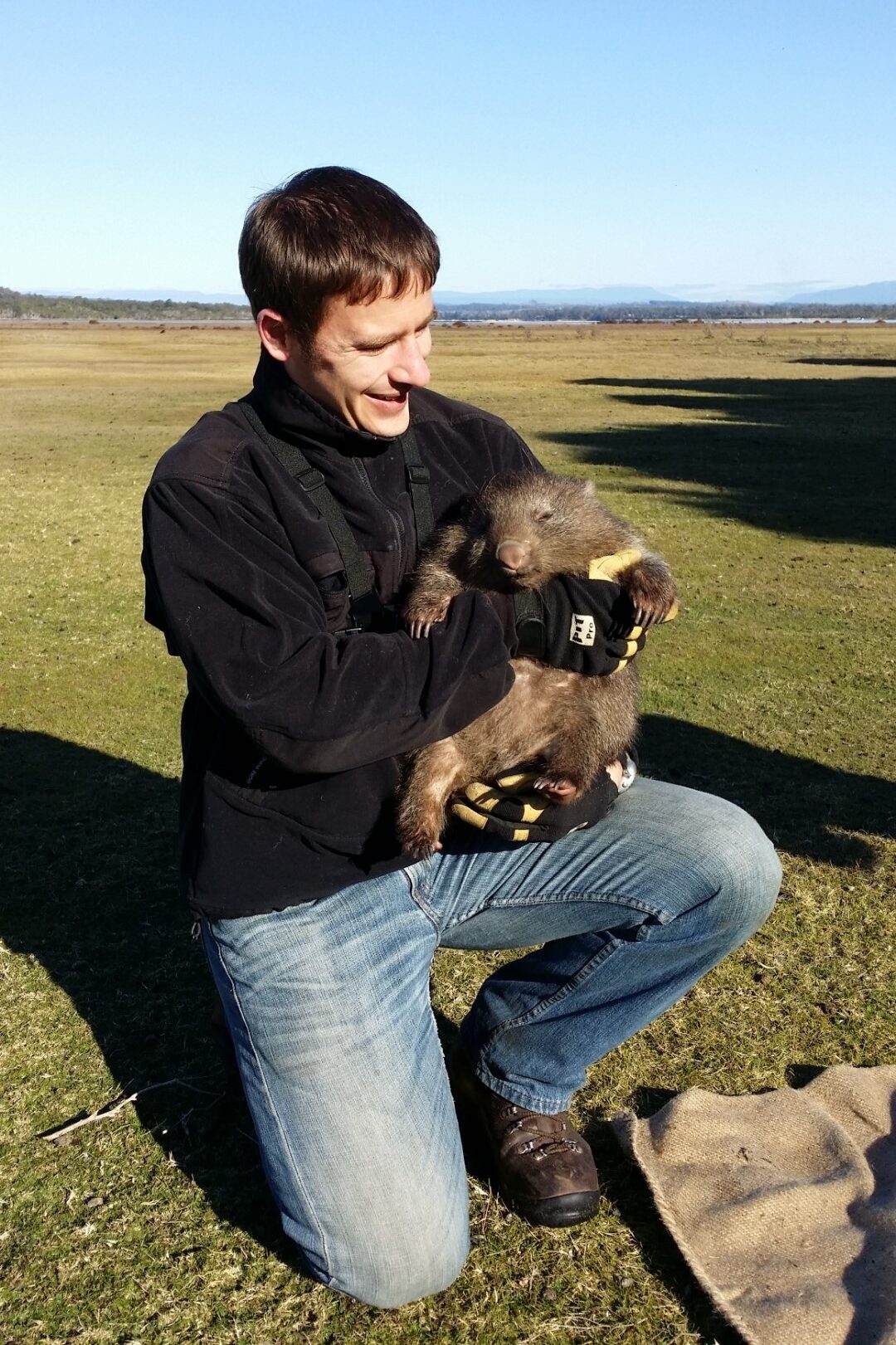When he was in elementary school, Scott Carver wrote a letter to the zoo in Wellington, New Zealand, near where he grew up. He had a question: “Can I have one of your lemurs for a week?”
The zoo replied with a very polite letter, but unfortunately, the answer was no.
Despite the lack of a lemur, Carver was exposed to plenty of animals at home—cats, dogs, chickens, goats and ducks—and pursued a biology degree at university, mostly because he wanted to be a zookeeper. He’s yet to buy a zoo, but his education and subsequent focus on disease ecology have the potential to positively impact whole populations of creatures, not just those in captivity.
Carver has studied chytrid fungus in amphibians, sarcoptic mange in wombats, mosquito-borne diseases in marsupials, hantaviruses in small mammals, and pathogen transmission in cats—both wild and domestic, large and small.
After joining the Odum School of Ecology in January, he’s working to apply his knowledge and experience in new areas while forging interdisciplinary collaborations and leveraging UGA’s significant resources in disease ecology.
“As a disease ecologist, UGA is one of the best places in the world you could be,” said Carver, ecology professor and associate director of UGA’s Center for the Ecology of Infectious Diseases. “There’s probably greater critical mass here than anywhere in the world.”
Prize-winning poo

It’s not easy to catch a wombat. The cute marsupials, related to koalas and kangaroos, can run nearly 25 mph. There’s video proof; you can watch Carver sprint toward a wombat with what looks like a large butterfly net, successfully netting the animal but then hitting the ground pretty hard.
His research with wombats began at the University of Tasmania, where he took a faculty position after earning master’s and doctoral degrees. For his M.Sc., he studied disease effects on amphibian physiology at Victoria University of Wellington, and for his Ph.D., he studied mosquito-borne disease ecology at the University of Western Australia. He also completed two post-docs—one in Montana, where he worked on small mammal ecology and Sin nombre virus, and another in Colorado, where he worked on various pathogens in domestic cats, bobcats and mountain lions.
In his new home of Tasmania, wombats in Narawntapu National Park were being affected by an outbreak of sarcoptic mange, a disease that is fatal to them. Known as scabies when it affects humans, sarcoptic mange is caused by a tiny parasitic mite that burrows into the skin. It results in painful itching and hair loss as it triggers an immune response. In their weakened condition, wombats can succumb to bacterial infections from the environment.
“Nobody was working on it,” Carver said. “In fact, nobody had almost ever worked on wombats in Tasmania. It was astonishing.”
He was looking for a local project where he could apply his expertise and his students could get experience collecting field data. The national park was one of the best places to see wombats, and sarcoptic mange causes very visible signs of suffering. So when Carver and his students got to work, there was lots of public interest and media coverage.
That coverage intensified when a side project seemed to answer the age-old question about square pegs and round holes. Wombats produce cube-shaped poos that look like small charcoal briquets and aggregate them around objects like rocks and logs, a practice that may play a role in communication. How wombats create square-shaped poos was a mystery, but theories were abundant. Does their sphincter mold it into a square as it comes out? Were they pooing and then turning around and shaping them?
The answer was no. Working with a team including scientists from Georgia Tech, Carver discovered that the cubes are formed in the distal colon, the last part of the intestine. In most animals, a cross-section of the intestine would reveal uniform thickness in intestinal muscles. In wombats, it alternates between thicker and thinner—which is what molds the corners. As moisture is drawn out, it firms and fragments at regular intervals.
For this research, Carver and his colleagues won the 2019 Ig Nobel Prize in Physics, awarded for research achievements that “first make people laugh and then make them think.” The team accepted the award at a ceremony held at Harvard University in Cambridge, Massachusetts. Carver wore a wombat costume, and two of his colleagues from Georgia Tech wore cubes.
Publicity after the Ig Nobel lasted about 18 months, with the team doing interviews for newspapers, radio, television and podcasts. There was also a documentary: Secrets in the Scat. And they published two peer-reviewed papers on their findings, with a third on the way from a student of Carver’s who explored the functional role of the wombats’ aggregated poo cubes.
Some scientists might not appreciate their hard work being recognized in such a manner, but not Carver.
“I’ve embraced it. It’s such a fun story,” he said. “On a serious side, we discovered a whole new way of actually making cubes, which is pretty weird, and it might have some translations. But really, it’s fun, and I think you should have fun with it.”
The WomBot
The mystery of the cube-shaped poo may have been solved, but the problem of mange in wombats persists. One tool Carver helped develop is the WomBot, a mini tank designed to go into wombat burrows and gather environmental data. Designed with a robotics engineer from La Trobe University, the WomBot is equipped with a thermal camera and sensors that record temperature and humidity, giving scientists a glimpse into the nocturnal animals’ habitat.
“Wombats are really solitary animals, and they don’t have much direct contact,” he said. “They live down in these burrows, and they shift homes every few days. We think that when they get mange, they leave mites in the burrows, and then the next wombat that comes in gets exposed to them that way.”

Wildlife rehabilitators and carers had been successful, at least short term, using a treatment regime on wombats, with Carver and his team collecting scientific data on these types of disease control efforts. That regime proved to be unsustainable long term, but a new drug called fluralaner (commercially known as Bravecto in the U.S.) is now in field trials, with Carver’s team collecting data and developing usage recommendations for Australia’s equivalent of the Food and Drug Administration.
And wombats aren’t the only creatures having problems with mange. Carver is also building up work with vicuña in South America. A member of the Camelidae family (which also includes camels, alpaca, llama and guanaco), vicuñas are valued for their wool that can be sheared only every two years.
“When they get mange, you can’t shear them, which influences economies and cultural practices of Andean communities,” Carver said. “That further influences land-use practices, with communities turning to other income options like mining.”
Mange has also shown up in black bears in the eastern U.S., including populations in Arkansas. Carver suspects that host species like coyotes, who are reestablishing their range across the eastern U.S., or red foxes may be facilitating the spread. As he establishes his new lab at the Odum School, he plans to explore these kinds of multi-host species dynamics that may be a factor. And he’ll be able to collaborate with scientists like Michael Yabsley at UGA’s Southeastern Cooperative Wildlife Disease Study.
“Michael Yabsley at SCWDS has done some really great work on sarcoptic mange. He and [former Ph.D. student] Kevin Niedringhaus have done really great work in a range of species, including black bears,” Carver said. “UGA has a great history of doing really fantastic work on sarcoptic mange and wildlife.”
Mange has been documented in more than 150 species around the world, according to Carver.
“That makes it among the most widespread and also burdensome of mammalian parasitic diseases,” he said. “It’s also still in the top 50 human diseases in terms of prevalence, particularly in tropical regions. It’s really diminished in temperate regions associated with advances in western health care.”
Next Gen

As fall semester approaches, Carver is applying for a grant to fund vector-borne disease modeling using artificial intelligence, to help better predict disease distribution and how it might be affected by factors including climate change.
In addition to continuing his work in vector-borne diseases in the U.S. and elsewhere, Carver will be teaching a new field methodology course this fall. Focused on the scientific method, the class will take students all the way through the process of observation, forming hypotheses, undertaking fieldwork, and interpreting data. They’ll develop skills that ecologists use frequently in the field, gaining experience with techniques like observational surveys, pitfall trapping, camera trapping and small mammal trapping.
He’ll be training a new generation of ecologists and infectious disease researchers, but the notoriety of winning the Ig Nobel Prize may be a large part of his legacy. Carver is OK with that.
“I’m totally committed to doing great research that translates and has applied meaning in the world,” he said. “But I’m also a complete supporter of research that’s just fun and sparks people’s imagination.”

